I have always been insanely proud to work at UCL. My first job was as an assistant lecturer. The famous pharmacologist, Heinz Otto Schild gave me that job in 1964, and apart from nine years, I have been there ever since. That’s 50 years. I love its godless tradition. I love its multi-faculty nature. And I love its relatively democratic ways (with rare exceptions).
|
From the start, the intellectual heart of UCL has been the staff Common Room. As I so often say, failing to waste time drinking coffee with people who are cleverer than yourself can seriously damage your career (and your happiness). And there’s no better place for that than the Housman room. |
 |
It is there that I met the great statistician Alan Hawkes, without whom much of my research would never have happened. It was there that Hyman Kestelman (among others) gave me informal tutorials on matrix algebra over lunch. It was there where I have met John Sutherland (English), Mary Fulbrook (German), many historians and people from the Slade school of Art. And it was there where, yesterday, I had an illuminating conversation with Steve Jones about the problems of twin studies for measuring heritability.
I was astonished when I arrived at UCL to discover that the Housman room was male only. I’d just come from Edinburgh which still had separate men’s and women’s student unions and some men-only bars. But Edinburgh also had a wonderful staff club, open to all. It’s true that UCL had also a women-only common room and a mixed common room, the Haldane room (which is where I went usually). But the biggest and most impressive room, the Housman room, was for men only. I found this very odd in the 1960s, the age of sexual liberation. Reform was in the air in the 1960s.
A lot of other people, not all female, thought it odd too. Direct action was called for (I was in CND at the time). So we’d go into the Housman room with a woman and join the queue for coffee. It never took long before some pompous prat would tap the woman on the shoulder and eject her. I can’t remember now the names of any of the feisty women who braved the lions’ den (perhaps this blog will remind someone).
|
I had any ally in Brian Woledge. He was Fielden Professor of French at UCL from 1939 (when I was 3) to 1971 so he was on the brink of retirement. I was a young lecturer, but our thinking on segregation was much the same. His obituary in the Guardian says “Of robustly secular beliefs and Fabian views, in important respects he was an heir to the ideals of the Enlightenment”. It’s no wonder we got on well. The picture, from around 1970, was supplied by his son, Roger Woledge, who was in the Physiology department at UCL for most of his life, and who did his PhD with my great hero, A.V. Hill. |
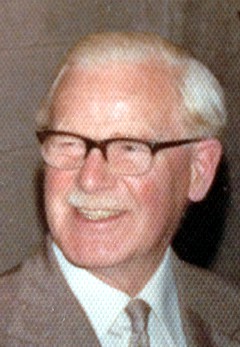 |
In 1967 we proposed a motion at the Housman AGM to desegregate all common rooms. It was defeated. The next year we did it again, and were defeated again.. But at the third attempt, in 1969, we succeeded. I was very happy to have had a small role in upholding UCL’s liberal traditions.
|
It is now quite impossible to imagine that UCL was segregated. After all, UCL was the first English university to admit women on equal terms to men, in 1878 (the Scots were a bit ahead) And UCL was home to Kathleen Lonsdale (1903 -1971), one of the first two female fellows of the Royal Society, and the first female professor at UCL. |
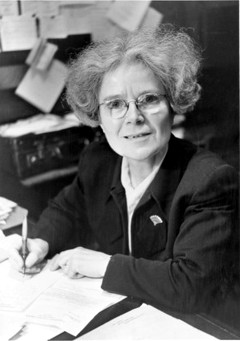 |
Nevertheless, in the mid-1960s, women were very far from being regarded as equal, even at UCL. At the time, segregation was more common than people now remember.
I was spurred to write this post when Melissa Terras, UCL’s professor of digital humanities, retweeted a reminder that it was in 1967 that a woman first ran in a an official marathon, and suffered physical attack from a male organiser for her temerity.
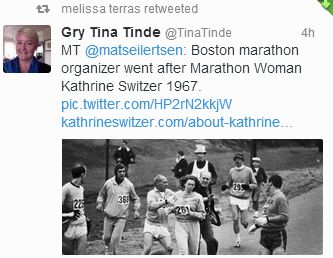
I responded

I was urged to record this history by both Terras and by Lisa Jardine, Director of UCL’s Centre for Interdisciplinary Research in the Humanities. So I have done it.

I was very aware of Kathy Switzer at the time, and I’ve no doubt she is part of the reason why I felt strongly about segregation. You can read about the 1967 Boston marathon in her own words. I thought it was a wonderful story, though I wasn’t yet into distance running myself (I was still sailing and boxing).
One of the great thing about marathons is that women and men run in the same race. That means that almost all men have had to get used to being overtaken by very many women. That has been wonderfully good for deflating male egos. When I was training for marathons in the 1980s, my training partner, Annie Briggs was on the elite start -a good hour faster than I could manage.
|
Now we are accustomed to watching Paula Radcliffe run marathons faster than any but the very best men. She’s the world record holder with the spectacular time of 2 hours 15 min in the 2003 London Marathon (my best is 3 hr 57 min). That’s only a bit over 26 consecutive 5 minute miles. And that’s faster than I could run a single mile at my peak.[Picture from Wikipedia: NYC marathon 2008 2:23:56] |
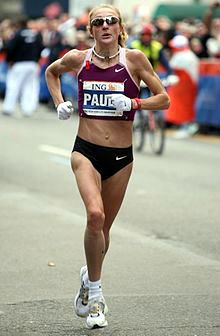 |
It’s now utterly beyond belief that in the 1960s men were saying that women were too feeble to run 26 miles. It was sheer blind arrogance. After Switzer, progress was fast. In 1972 women were allowed to run in Boston, and within 10 years, the women’s record time had fallen by a full hour. Physiology hadn’t changed, but confidence had.
Of course it wasn’t until the 2012 Olympics that women gained total equality in sport. Everyone who said that women were incapable of competing in combat sports should see Rosi Sexton in action.
She’s the ultimate high-achiever. She’s an accomplished musician (grade 7 cello, ALCM piano) and she played at the Albert Hall with the Reading Youth Orchestra. She went on to get a first in maths (Cambridge, Trinity College), where her tutor was Tim Gowers. Then she did a PhD in theoretical computer science from Manchester (read her thesis). And she’s had a distinguished career as professional athlete, competing at the highest level in MMA. Why? “The other things I did, the music, the maths, just weren’t quite hard enough“.
Not many athletes have a paper in the Journal of Pure and Applied Algebra. I’d be very happy if I could do any one of these things as well as she does.
|
It could not be more appropriate than to be writng this in the week when the Fields medal was won by a woman, Maryam Mirzakhani, for the first time since it started, in 1936. Genetics hasn’t changed since 1936. Confidence has. UCL mathematician, Helen Wilson, points out the encouragement this will give to female mathematicians. |
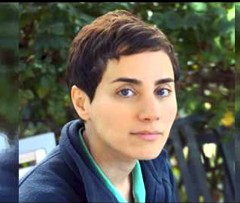 |
On 15 July 2017, Maryam Mirzakhani died, at a mere 40 years old. It’s tragic that having achieved so much, against all the odds, the dice rolled the wrong way for her, and cancer destroyed her. Her life will inspire generations to come.
As in marathons, confidence, role models and zeitgeist matter as much as genetics.
It’s examples like these that have made me profoundly suspicious of generalisations about what particular groups of people can and cannot do. Whether it is working class boys. black boys, or women, such generalisations can be shattered over a decade or two, once the zeitgeist changes.
That’s one reason that I am so unsympathetic to the IQ enthusiasts. Great harm has stemmed from the belief that it’s possible to sum up human achievements in a single number. What’s more, it’s a number that measures your resemblance to white male psychologists. It is because politicians believed the over-hyped claims of psychologists in the 1930s, that three-quarters of the population was written off. Much the same thing has happened with women, and with skin colour.
Don’t believe it.
And the job of desegregation may not be entirely finished. In fact now it is harder to combat, since it’s unspoken. Once again, I’m reminded of Peter Lawrence’s essay, The Mismeasurement of Science. Speaking of the perverse incentives and over-competitiveness that has invaded academia, he says
“Gentle people of both sexes vote with their feet and leave a profession that they, correctly, perceive to discriminate against them [17]. Not only do we lose many original researchers, I think science would flourish more in an understanding and empathetic workplace.”
The perverse incentives that make academic life hard for women (and for many men too) are administered by HR departments (with the collusion of mostly elderly male academics). They are the very same people who write fine-sounding diversity documents and lecture you about work-life balance.
It’s time they woke up.
Note. The minutes of Housman AGMs from the 1960s are missing at the moment. If they come to light, this post will be modified accordingly.
Follow-up
29 August 2014
|
As I’d hoped, this post elicited the name of one of the women who braved the rules and went into the Housman room when it was still men-only. I had an email from Lynn Bindman, and she told me that one of them was Gertrude Falk (1925 – 2008), who had worked in Bernard Katz’s Biophysics Department since 1961. |
In 1967 she must have been about 42. The episode is mentioned in Gertrude’s obituary in the Guardian. She also sent me a copy of the Physiologocal Society’s obituary, which recounts the story thus.
“Her indifference to conventions is well illustrated by the occasion when, drinking coffee in the men’s staff common room, at that time still segregated, she responded calmly to the Beadle summoned to escort her out, “well, I am certainly going to finish my coffee first”, and did so at her leisure.”
I have another story about Gertrude’s feistiness. Every year the Royal Society has a soirée for fellows and guests. It’s a sort of private view for the Summer Science exhibition. Men are required to dress like penguins despite the heat, and the invitation says “decorations will be worn”. The food is good though it’s all a bit pompous for my taste. Some years ago I met Gertrude at a soirée and I saw she was wearing a medal round her neck. I said “have they made you a Dame of the British Empire?”. She held up the medal and I saw it said “Erasmus High School Economics Prize”. She is why I usually go to the soirée wearing my London Marathon medal.
12 May 2015
Surprising as it seems now that the Housman room excluded women until 1969, there are other UCL institutions that were almost as slow as Oxford and Camridge to join the modern age.
One of these is the Professors’ Dining Club (it isn’t actually restricted to professors). I recall going to one of their dinners in the 1960s, as a guest of Heinz Otto Schild, the then head of Pharmacology, who gave me my first job. He was a lovely man, but I was horrified that it didn’t allow women to join. I recently discovered that its records reveal that it didn’t see the light until 1981. It wasn’t until after that happened that I joined the club. It seems now to be a shameful record.
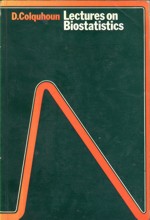

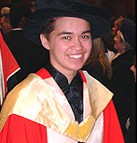
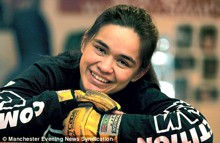
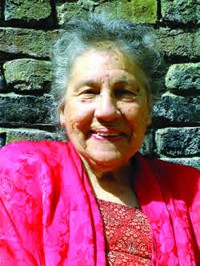

That was a wonderful read, thank you, David. Your link to Rosie Sexton’s thesis needs fixing – it just links back to this page.
Your admiration for Rosi Sexton’s considerable academic and sporting achievments is understandable. However, on this occasion you failed to mention that she is also an osteopath from whom you have received complementary treatment.
I was surprised that you, a formidable critic of alternative/complementary therapies had consulted Dr Sexton for osteopathic treatment; admittedly based on wishful thinking rather than evidence.
Whilst cider with Rosi would be acceptable please assure your many fans that you will draw the line at ‘PhD Diet Whey’ with Rosi for ‘Body Sculpt’ (TM) reasons. That surely would be a move to the dark side.
Thanks Skepticat The link to Rosi’s thesis is now fixed. Good luck with it!
@CrewsControl
Ah yes, you are referring to a 2013 diary entry. I responded to you question there, and I’ll repeat it here for completeness.
I agree it seems odd that Rosi should choose osteopathy rather than physiotherapy, but remember that this was her fourth degree and she had to earn a living at the same time.
Sorry to come back to this in a post that celebrates the achievements of remarkable women; but the blog is about exposing quackery.
Dr Sexton claims that PhD products are well researched in the link I gave above. I don’t know the literature in this area so perhaps you could indicate the studies on ‘Diet Whey’ and comment on their quality.
And as for “..and she had to earn a living at the same time“. Well so do all the crystal therapists, chiropractors and acupuncturists out there who get a regular pasting on your blog.
It pains me to say this but I think I could use your template to write copy for AltMed treatments or TCM
The question of Traditional Chinese Herbal remedies for older impotent men is indeed a murky one. Given the very high intensity of physical activity involved in coitus it’s perfectly reasonable to think they will have to be treated differently from the average College Jock. And given the tiny margin between achieving orgasm and failing it’s unlikely that it will ever be possible to obtain good evidence that a particular herbal treatment helped you achieve satisfaction. Needless to say Mr CrewsControl is perfectly aware of this and makes no claim that can’t be justified.
I’m sure that you are professional enough not to allow friendship to cloud your judgement but it seems to me that you are taking a more charitable and less rigorous approach in this instance
(a) The same could be said of physiotherapy, The evidence base is lousy for most of the manipulation and exercise stuff that they recommend (and that’s excluding the fraudulent stuff like acupuncture that a few of them do). It’s accepted because it seems to be common sense. The sane end of osteopathy is, as far as I can tell, pretty much identical with physiotherapy. Osteopathy is no more “alternative” than physiotherapy, as practised by someone like her.
The reference you gave is to the sponsor’s site. The only bit that I’d disagree with is “well-researched”. There’s very little research when it comes to performance. The charitable interpretation is that it means that sensible, uncontaminated ingredients are used. Diet whey is being used as a convenient source of protein, that’s all. There is no comparison between that and, say, Carol Vorderman’s lyrical endorsement of vitamin supplements for all.
(c) The example you produce about coitus is just plain silly. Perhaps you don’t appreciate the incredible intensity of training that’s done by world-class athletes. There isn’t the slightest analogy with coitus. Neither is there any analogy between high protein diets and Chinese herbs. Protein is essential, and large amounts of it for people who are training intensively makes sense, even if it isn’t proved to be of benefit. Chinese herbs are never essential for anything, and they are often contaminated too.
CrewsControl – I appreciate your concern, and furthermore, I acknowledge that not every decision I make, either personally or professionally, can be validated by high quality evidence. Unfortunately, the reality is that in many areas of life, answers based on this high standard of evidence are simply not available. Treatment for various kinds of back pain, and sports nutrition for athletes are amongst those; they are highly complex issues with few clear cut answers. I am happy to discuss them in more detail if you wish.
However, my position is not that I can perfectly rationalise every choice I make but that I embrace rational discussion and am clear and honest about what the evidence says (and does not say). I do sometimes allow my judgement to be informed by experience as well as academic study, and I’m aware of the conditions under which this is a more or a less reliable method for developing expertise (http://www.ncbi.nlm.nih.gov/pubmed/19739881).
I do my best to avoid unsubstantiated claims, and routinely change my opinions when presented with new evidence. I also understand the nature of conflicts of interest and try to limit the effect that these have on my judgement; where they may be an issue, I state that openly.
In short – I am not a perfectly rational being, but I attempt to mitigate that by being open to a rational discussion about my decision making process. I’d be happy to discuss any of these issues further with you if you’d like to contact me directly.
@rosiexton
Thanks for joining the discussion. I think that you hit the nail on the head when you point out that there simply are not good evidence-based treatments for back pain and for many other common conditions. That being the case, all anyone can do is to guess. And all one can hope is that the guess is made by an intelligent thinking person, not by someone who grasps at straws (like acupuncture, or “cranial osteopathy“).
A lot of confusion would be saved if people said straight out (as you have done) that nobody knows how to help all sorts of common conditions.
The case of sports nutrition is even more difficult, because the margin between winning and losing is minute. It’s hard to imagine that it will ever be possible to detect a difference of a few seconds in a 2.25 hour marathon. About all one can say is that if someone is doing very intense exercise over a long period it’s likely that they’ll need to eat a lot more than the average couch potato. A concentrated form of protein may be simply be more convenient than eating a pound of chicken.
That being said, the sports nutrition business is rife with totally unjustified claims. It is as corrupt as most of the rest of the nutrition business.